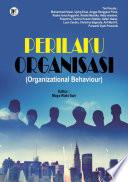(Text Book)
This book is the result of a decade teaching of Islamic finance course to business graduates (Bachelor and Master classes). This book is written with a clear focus on learning of Islamic banking & finance by accounting, banking, business and finance students/professionals. This book is divided into five parts. Part-1 presents an update on Islamic finance, why and how Islamic banking started; What is current status; Meaning and prohibition of Riba (Interest & Usury) as reported in revealed books (Bible and Qur'an); business models under Islamic financial services industry; principles of Islamic financial system, similarities and differences with conventional finance industry, and challenges being faced by the nascent industry.Part two is about asset-backed financing provided by IFIs. It includes trading (selling) modes of financing including Murabaha (ch.2), Salam, and Istisna'a; it also includes rental-based financing product-Ijarah financing. Chapter 2,3,4,5 include sales and rental-based financing. Part three of the book deals with profit and loss sharing modes of financing including Musharakah, diminishing Musharakah and Mudarabah. A special section is devoted to discussing the causes of lesser application of Musharakah in operations of IFIs, in addition to Shari'ah rulings and financial impact. Chapter seven is about Diminishing Musharakah; a form of gradually declining partnership between an IFI and clients; generally used to finance real estates. Under diminishing Musharakah, the basic Shari'ah rulings, Islamic house financing, comparative study of conventional and Islamic mortgages and installment calculation under different assumptions for house financing are presented. Chapter eight is about Mudarabah. Chapter nine presents various types of deposits collected by IFIs and profit-sharing mechanism. Concepts of daily product and weight-age based profit systems are elaborated.Part four of the book presents special topics in Islamic Finance. In this part areas of liquidity management, Islamic insurance, currency system, substance & form, and challenges to Islamic finance industry are elaborated. Under Islamic capital market (liquidity management) two dedicated chapters have been included; each for equities and sukuk. Chapter 12 elaborates briefly the concept of Islamic insurance covering multiple areas including Shari'ah guidelines, takaful (insurance) models, and role of insurance company, in addition to illustrative financial calculations. Chapter-13 addresses the issue of preference for 'legal form over economic substance' by critically evaluating the selected Islamic finance contracts Last chapter identifies the challenges [potentially hurdles in sustainability, growth and expansion of the industry]. The fifth edition is the outcome of encouraging response by the academic community to earlier editions. In this edition, due attention has been given to present material in a reader-friendly mode in addition to a thorough review of content, exercises and figures. Title of the book changed by adding prefix of 'fundamentals' to reflect the nature of work (as text book). In this edition, the chapter on Islamic finance: an update is revised thoroughly; and by insertion of specific contents including principles and business models of Islamic financial system, in addition to brief presentation of challenges. Besides, Islamic capital market is re-written by including an evaluation of methodologies used in creation of Shari'ah universes of stocks. Also, a new chapter included to present the application of 'form over substance' principle to industry practices. Updated figures on the global volume of assets, application of financial products; regional shares, etc. are also part of this edition. Also, more examples included in the text to make the concept clear. An increased number of multiple-choice questions and mini cases are also forming part ofthe updated edition. I welcome readers' Feedback.
This book is written with a clear focus on learning of Islamic banking & finance by accounting, banking, business and finance students/professionals. This book is divided into five parts.









